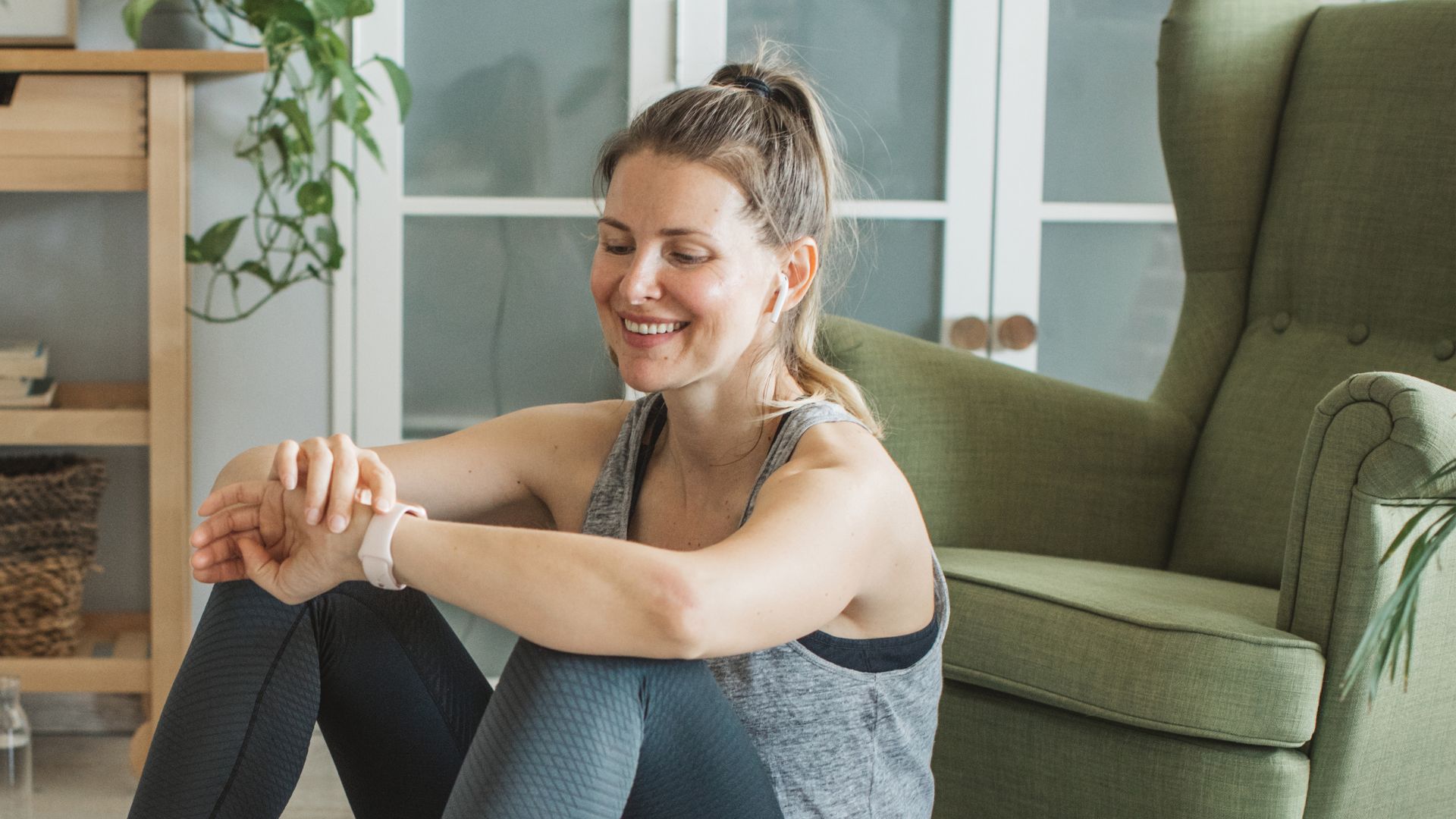The good morning exercise is an 'underrated' way to strengthen the core and glutes - here's how to do it
Tired of deadlifts? The good morning exercise builds strength in the lower body, back, and shoulders just as well, using the same equipment


The good morning exercise targets the glutes in the lengthened position, much like the deadlift. You have to stabilise your upper body and engage your core in the same way, too. So, if you're looking to add another glute exercise to your strength training routine, I'd always recommend this one.
I've been going to the gym for over six years, and in that time, I've tried a lot of different strength workouts. I've done quadricep exercises and back exercises to build strength for running, Pilates classes to improve my mobility, and done more sets than I could ever count. But the good morning exercise has always been a staple for me, and it's a hugely underrated exercise.
Harriet Harper, a certified personal trainer and strength specialist, agrees it's a great compound movement, targeting more than one muscle simultaneously. "Good mornings can also be done anywhere. A barbell is best for home workouts, but I'd suggest using a Smith machine at the gym," she says.
What is the good morning exercise?
The good morning exercise targets the glutes (buttocks) and focuses on a hip-hinge movement pattern, says Harriet. This is where you push your glutes behind you, aiming for an almost horizontal position.
"It's very similar to the Romanian deadlift (RDL)," says Harriet. "The main difference is where we place the barbell or hold the weight. With the good morning, we place it on our back in a 'low bar' position, resting on our rear delts (muscles at the back of your shoulders)."
Otherwise, the movement pattern is almost the same, she says. "We want to hinge at the hips, driving our glutes backwards whilst keeping a slight bend to the knees on the way down."
Unlike the RDL, however, the good morning exercise focuses on the glutes above all else. So, if you're looking to build a stronger backside without tiring out your legs, this is the exercise for you.
Sign up to our free daily email for the latest royal and entertainment news, interesting opinion, expert advice on styling and beauty trends, and no-nonsense guides to the health and wellness questions you want answered.
How to do the good morning exercise
- Tuck yourself under a barbell, making sure the bar sits comfortably just under your rear shoulder muscles.
- Keep your feet shoulder-width apart and make sure you have a soft bend in your knees.
- Grip the bar, squeeze your shoulder blades together, and engage your core.
- Slow and controlled, start pushing your glutes back as if you're trying to press a button on the back wall of the room.
- Keep going back until you feel a stretch, or if your back begins to round. This is the end of the movement.
- Make sure your back stays straight throughout the movement.
- Squeeze your glutes and push back up to the starting position.
Expert tip: "You don't need to come super low. The point of the exercise is to lengthen the glute muscles, so we really want to focus on driving the hips back whilst keeping a neutral spine," says Harriet. "Make sure to keep the neck in line with the spine (no checking your form in the mirror!) and keep the core braced throughout."
As the good morning exercise works the gluteus maximus primarily, you might want to incorporate other glute exercises for a fully-rounded routine. The clamshell exercise, for instance, works the gluteus medius and minimus. These are the two other smaller muscles in the buttocks.
What muscles do good mornings work?
The good morning exercise works all the muscles in the posterior chain, which are all the muscles on the back of the body. This includes:
- Glutes
- Erector spinae (lower back)
- Rhomboids, trapezius (upper back)
- Latissimus dorsi (back)
- Core muscles
- Calves
Why is it a good exercise?
The good morning has three key benefits: it boosts strength in key muscle groups that help support movement in daily life, it can help improve your posture, and it can help reduce the risk of injury during other activities like walking, cycling, or running. It's also one of the better core exercises to do with weights.
We use our glutes, hamstrings, lower back, core, and calves for everyday movements we wouldn't even think about, like climbing the stairs or standing up from a chair. Strengthening these muscles can make these activities (and any harder ones, like dedicated exercise) feel easier, and the benefits will extend into later life.
Equally, if we're sat down for most of the day, our posture can suffer. As these muscles also help align the spine, strengthening them helps to improve posture as well.
Romanian deadlift vs good mornings
- For building glute strength: Good mornings focus almost exclusively on the glute muscles, with the lower back and hamstrings recruited for stability. The Romanian deadlift, on the other hand, recruits the quadriceps, hamstrings, lower back, and glutes in almost equal measure.
- For beginners: Those new to weight training may prefer the RDL over the good morning, at least for the moment. The hip-hinge movement pattern is easier to learn as you hold the weights by your sides instead of behind your head. "Most people won’t be able to lift as heavy in the good morning as they would in the RDL due to the bar placement," adds Harriet.
- For boosting balance and stability: Good mornings have the edge on this one as you use more of your core muscles to stabilise your body as you bend over. However, your balance will be challenged with any hip-hinge exercise.
- Upper body strength: "With an RDL, we hold the weight down in front of us, and therefore it requires a little more work from our lat muscles (in the back)," says Harriet, so the RDL wins if you're looking to add this exercise to an upper-body dumbbell workout.
- Equipment: If you're doing strength training at home and only have dumbbells for company, Harriet recommends an RDL instead of the good morning as it's easier to position the free weights with this movement.
Can you do the good morning exercise with dumbbells?
Yes, you could do the good morning exercise with dumbbells instead of a barbell by "holding them behind each shoulder", says Harriet, but it's not ideal. It won't be as comfortable, and you might struggle to get the same stretch in your muscles.
"My preference for good mornings would be a Smith machine as it's super easy to load and pretty fail safe," she says.

Grace Walsh is woman&home's Health Channel Editor, working across the areas of fitness, nutrition, sleep, mental health, relationships, and sex. She is also a qualified fitness instructor. In 2025, she will be taking on her third marathon in Brighton, completing her first ultra marathon, and qualifying as a certified personal trainer and nutrition coach.
A digital journalist with over seven years experience as a writer and editor for UK publications, Grace has covered (almost) everything in the world of health and wellbeing with bylines in Cosmopolitan, Red, The i Paper, GoodtoKnow, and more.
You must confirm your public display name before commenting
Please logout and then login again, you will then be prompted to enter your display name.